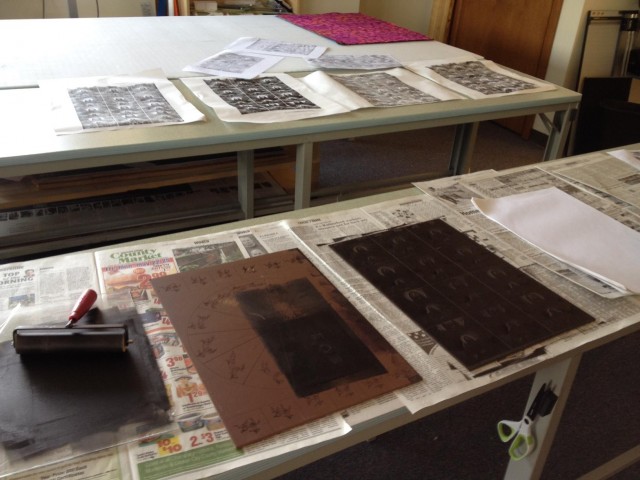Here’s the drawing:
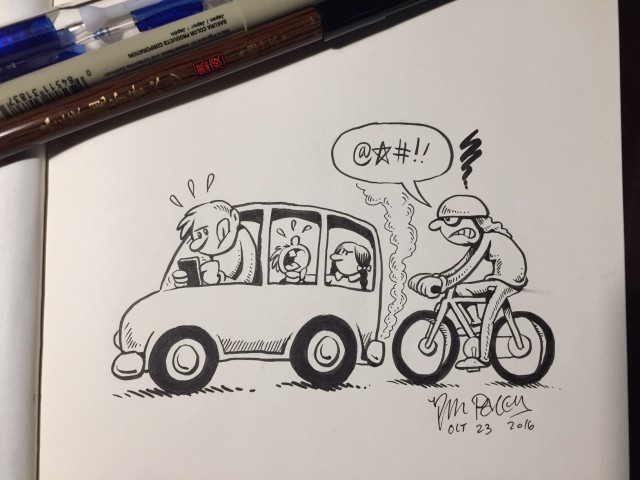
Animator. Director. Artist. Scapegoat.
I noticed some artist and animator friends were posting drawings with the hashtag #inktober. This is the sort of thing I never do. But it had been years since I’d respectfully drawn with ink on paper, and I kind of missed it. So I ordered myself some different brush pens, and the day they arrived I sat down and drew these:
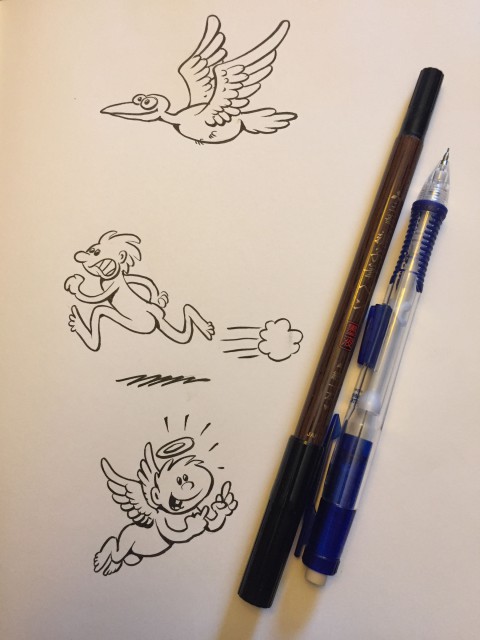
No warm-ups, no practice, just bam, out they came.
It’s been more than a decade since I’ve drawn in this style, with ink on paper. I’ve avoided it due to burn-out from drawing daily comic strips. Advice to you kids: turning something you enjoy into a daily job is a great way to make you hate it. I quit my last daily comic, The Hots, in 2003 (before that I did another mainstream daily, Fluff, and before that was my self-syndicated weekly Nina’s Adventures, the entire archive of which you may download here.) I guess 12 years is enough time to recover from style burn-out, at least a little.
“Inktober” has a list of “daily prompts” and I decided to just follow them:
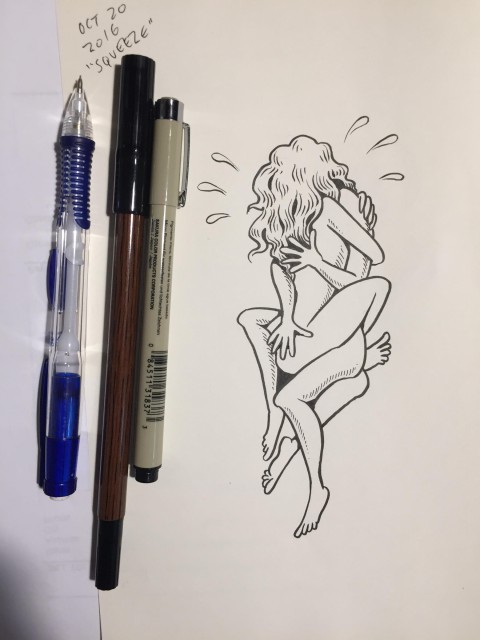
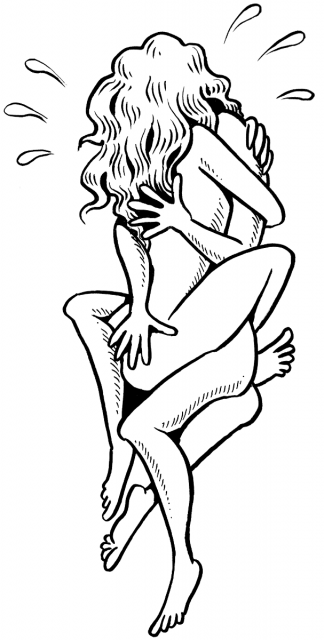
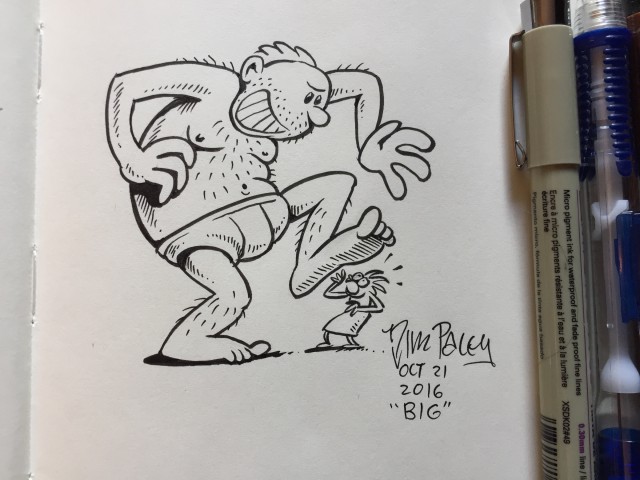
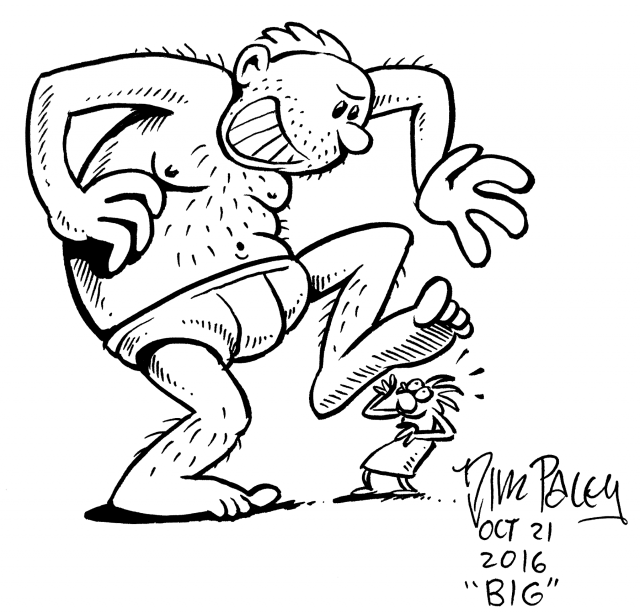
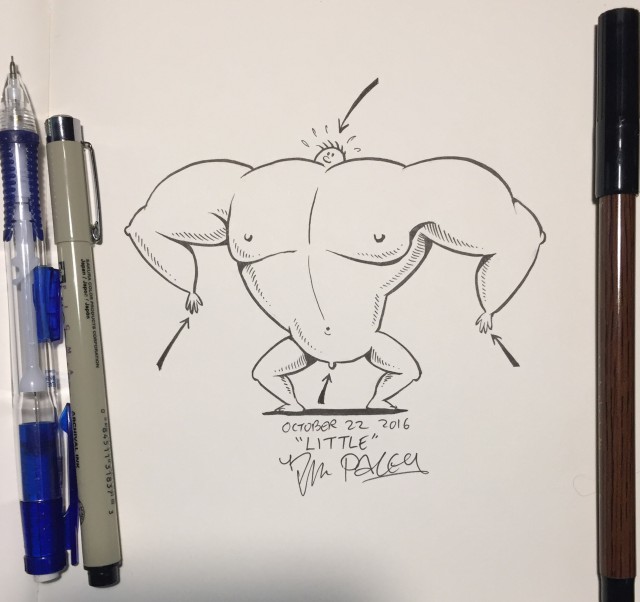
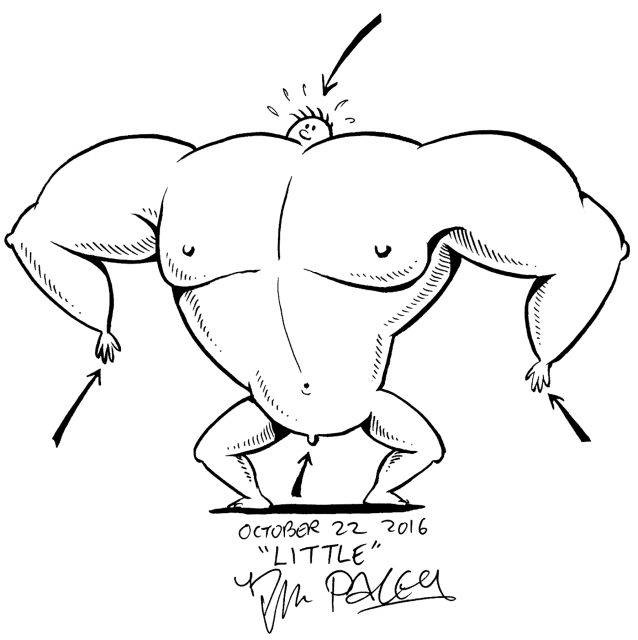
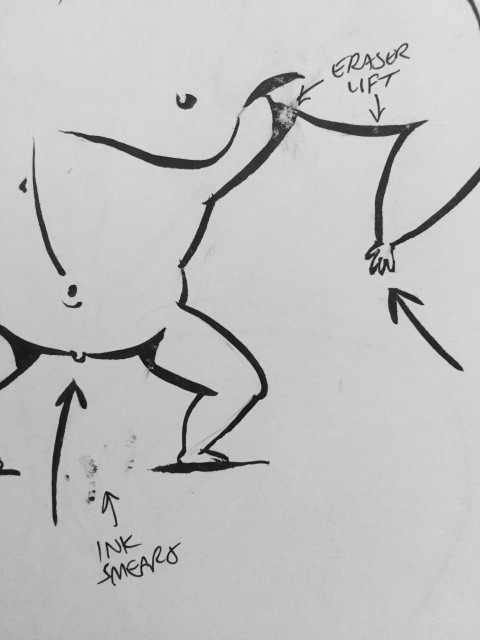
Honestly I’m enjoying this so much right now I’d kind of like to take on an illu$tration gig while I’m still fresh. Too much of that and I might burn out again, but right now it would be fun.
After a little over a year and a half, and many interruptions, we finally finished our embroidermated short, Chad Gadya. While we were working on it (actually I was working, Theo was procrastinating) this other embroidered short came out, but there are differences. Thanks to Theodore Gray’s stitchcoding in Mathematica, we weren’t restricted by (invariably crappy) off-the-shelf software. This allowed us to automate beautiful iridescent stitches and preserve them from frame to frame, so the resulting animation really looks like moving embroidery.
Every single embroidered frame you see here is available for sale, signed and numbered and one-of-a-kind. Only 9 months ’til Passover!
Chad Gadya will function as a sort of “intermission” in my feature film Seder-Masochism, marking the end of the Passover meal but just the beginning of the Israelites’ trials in the desert.
Update: Theo’s post on the technical side of stitchcoding embroidermation.
“It took a while to get all this code right, but of course it’s crucial that it cover every possible case, because when you’re doing animation, it’s not about getting one frame right, it’s about having an automated process that always gets every frame right, not just once, but every time there is an iteration of the animation requiring a re-render of the frames. We must have generated tens of thousands of frames (just generated the files, not actually stitched them!) before it was all looking good.” Theodore Gray
Update 2: All the stitching files we made for this are Free (CC-BY-SA) at archive.org! Download ’em and stitch ’em out as you please. They’re PES format; wish we had something better, but all embroidery formats suck.
These are some lousy test prints (I have no skill as a printer plus I used cheap water-based ink and cheap thin waste paper) I made of some linoleum print plates I designed and “cut” with the laser engraver at the local Fab Lab. The plates are to be part of a larger project with many artist participants, organized in Germany; I’ll write about it when it’s properly printed and officially released. My understanding is it’s about how the advent of the printing press led to the explosion of a unique kind of illustration: the wood-cut. Since I think the internet is in many ways analogous to the printing press, I saw a parallel in its own new kind of illustration: the animated gif. So my (linoleum) “wood-cuts” were designed to end up as animated gifs. When the project is done I will use the final, better prints to make better versions of these loops. But patience is not one of my virtues and I am excited about the test animated gifs I made from my lousy test prints, and when I make an animated gif I can’t wait to post it, so I didn’t wait, so here:
Here’s a phenakistoscope from another print, using the same all-purpose goat in our Chad Gadya embroidermation:
Some photos of the linoleum plates themselves:
The plate on the right is of the “Death” animation; on the left is my test plate, which I used to gauge the laser engraver. I also did some hand-gouging on it, confirming I’d rather use a machine.